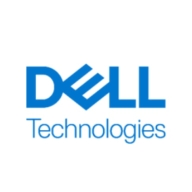


Dell PowerMax NVMe and NetApp E-Series are competing storage solutions. Dell PowerMax NVMe demonstrates superior performance and scalability, making it a preferred choice for speed and capacity-focused enterprises, whereas NetApp E-Series is appealing for its cost-efficiency.
Features: Dell PowerMax NVMe offers unmatched NVMe storage performance, sophisticated machine learning for workload optimization, and robust data services like deduplication and compression. NetApp E-Series provides simplicity, dependable data protection, and optimization for high-bandwidth applications.
Ease of Deployment and Customer Service: NetApp E-Series is known for straightforward deployment and efficient management, making it ideal for quick installations. Dell PowerMax NVMe, while requiring more expertise for optimal configuration, offers extensive configurability and high-quality, responsive support.
Pricing and ROI: Dell PowerMax NVMe involves a higher initial investment with potentially greater long-term ROI due to advanced features and scalability. NetApp E-Series provides a budget-friendly setup for a quicker ROI, suitable for organizations with limited initial budgets and short-term goals.



Pure Storage FlashArray//X is the world’s first enterprise-class, all-NVMe flash storage array. It represents a new class of storage – shared accelerated storage, which is a term coined by Gartner – that delivers major breakthroughs in performance, simplicity, and consolidation.
Dell PowerMax is the industry’s most secure mission-critical storage platform. With NVMe Dynamic Fabric technology, PowerMax breaks from traditional storage limitations, enabling seamless integration with cloud-native and legacy applications. Designed with a powerful scale-up and scale-out architecture, PowerMax supports mission-critical applications at scale with zero downtime and ultra-low latency. The latest PowerMaxOS 10 release harnesses AI-driven efficiencies for trusted performance, capacity, and security. By choosing PowerMax, you can trust in a secure, intelligent, and always modern storage solution that unlocks the full potential of your data to drive business success.
NetApp E-Series offers a flexible, high-performance storage solution ideal for handling intensive data requirements. Designed to optimize capacity and improve data availability, it supports diverse sector needs.
NetApp E-Series is a purpose-built system engineered to deliver fast, consistent performance. It is best utilized in environments requiring high-performance workloads where speed and efficiency are crucial. Users appreciate its reliability and scalability, which contribute to effective data management. The system is known for its efficient storage capabilities, providing robust data protection and seamless integration with existing infrastructure.
What are the key features of NetApp E-Series?NetApp E-Series is widely implemented across industries ranging from healthcare to finance, where it supports critical data-intensive applications. Its deployment in environments such as scientific research and media production highlights its capacity for handling high-speed data access and reliable performance.
We monitor all NVMe All-Flash Storage Arrays reviews to prevent fraudulent reviews and keep review quality high. We do not post reviews by company employees or direct competitors. We validate each review for authenticity via cross-reference with LinkedIn, and personal follow-up with the reviewer when necessary.